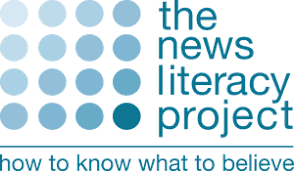What is “News Literacy” in This Age of “Fake News?
At the recent Public Relations Global Network meetings, Anne Green and Ralph Katz of CooperKatz shared a presentation on how to identify and essentially outsmart “fake news.” They shared how the News Literacy Project, whose mission is to provide the tools to sort fact from fiction and to know what information to trust, is working to help people make their own decisions.
The News Literacy Project is a not-for-profit founded in 2008 by Alan Miller, a Pulitzer Prize-winner and former Los Angeles Times investigative journalist. The organization takes a nonpartisan approach to news literacy education helping students – and now the general population – sort fact from fiction in the digital age. The goal: build this essential skill to help individuals appreciate the role of journalism – and be active citizens of a democracy.
It is essential to understand what fake news is:
Fake News
- “Fake news” is a specific misinformation strategy.
- It is misinformation that is not presented as “news,” rather as something else.
- Many people conflate rumors, hoaxes, false claims, mistakes in journalism or even simply a news story they don’t like under the phrase “fake news.” This is a problem—it obscures the issue and ends further inquiry.
The Washington Post recently wrote this: “The phrase ‘fake news’ – granted legitimacy by an American President– is being used by autocrats to silence reporters, undermine political opponents, stave off media scrutiny and mislead citizens.”
I have said many times during presentations that, “we, as the public, are not very smart.” I keep hoping I will be convinced otherwise.

